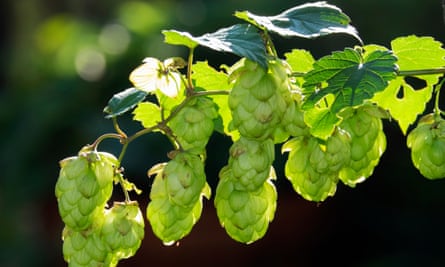According to many observers, 2016 could be the year in which craft beer is hit by the mother of all hangovers – in the shape of a significant hop shortage.
Last year, Washington State’s Yakima Valley – which produces about 75% of America’s hops – was hit by droughts and what should have been a bumper harvest was anything but. Even if the season was not quite the disaster some had predicted, growers still struggled to fully exploit their expanded acreage and sustain certain hop varieties.
The timing could not have been worse. Globally, the demand for aromatic US hops such as Simcoe, Citra and Amarillo – which impart vivid, tropical fruit-flavours, to pale ales and IPAs – has never been higher. With that clamour now far outstripping supply, a further spike in the price of US hops is expected.
Those who continue to drink big, powerful IPAs can expect to see this reflected in the price of a pint at the pumps; if breweries can source the relevant hops. Many new and smaller breweries will simply not be able to buy such hops cost-effectively. The open market is volatile for new breweries, and even those with long-term, annual contracts with brokers are not necessarily able to pick and choose which hops they want. The breweries that place extensive orders can buy sought-after hop varieties in large volumes. The little guys have to piece together their annual supply by taking myriad batches of various hops.
“It’s like a baggsy-ing system and the bigger you are the higher you can hold your hand up,” said Darius Darwell, assistant brewer at North Brew Co., a new Leeds brewery. “It is not uber-bleak yet, but it’s been a hard year for growers across the world, so we’ll see how it unfolds. We definitely haven’t got some of the hops we would generally want.”
Is that a problem? Yes and no. Pale ales and IPAs are craft beer’s most popular styles. All breweries want to make them. But according to Jon Hartley, a director at Manchester’s Blackjack brewery, the very fact that breweries cannot rely on regular deliveries of key hops could prove to be craft beer’s great creative motor. “Even now it is single-hopped, and we change the hop every time we brew our IPA,”he said.

Necessity is the mother of invention; perhaps to the extent that most craft drinkers have not even noticed. There is a school of thought that maintains the scarcity of hops was influential in the growing popularity of saisons [pale ales] and sour beers. Yes, brewers were naturally curious about these styles and drinkers are more open to new flavours but, significantly, preparing them allowed brewers to make interesting beers without relying so heavily on those precious US hop varieties.
This year, you can expect UK beer to get more imaginative. North Brew Co. has produced a pale ale that as well as using hops uses the plant bog myrtle to give it a distinctive, astringent and herbaceous edge. Up until the 16th century, bog myrtle was used to flavour hop-free gruit beers. In the US foraged beers flavoured with everything from sage to lingonberries are becoming increasingly popular. Could this be the year of foraged beer? It is a prospect as exciting as it is terrifying.
“Another way of combatting hop shortages is relying on the malts and yeasts to create a different backbone,” said Darwell. “Yeasts are incredibly diverse and using them in different ways is something we’ll definitely be looking at.”
Blackjack has several yeasts in play for precisely that reason. More recently, it has also been experimenting with less well-known US hops such as Jarrylo and Azacca, as well as unfashionable English hop strains. There have been attempts to cultivate bold, characterful US-style hops in the UK, but that process is still in its infancy. Instead, Blackjack has been using Pilgrim in its latest English pale ale. The result is a rigorously bitter beer that has a dank, hoppy, herbal and hay-like profile very different to that of the typicallycitrusy and fruity US pale ales.
“You can do really interesting things with UK hops or less in vogue American ones. It’s all down to the brewer,” said Hartley. “It’s not all about smashing masses of hops in – there is a lot more to it.”Hartley is confident that Britain’s small brewers can broaden drinkers’ horizons. “That will happen naturally as people use more European hops. Popular brewers have loyal fanbases and, like a musician releasing a new single, the fans who try [the new beer] will educate people. It is not just about hops anymore.”
This enforced change may happen, whether you like it or not. But if we see fewer brash, hoppy IPAs in Britain, will you miss them?

Comments (…)
Sign in or create your Guardian account to join the discussion